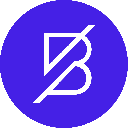-
 Bitcoin
Bitcoin $117600
0.25% -
 Ethereum
Ethereum $4424
0.10% -
 XRP
XRP $3.101
0.50% -
 Tether USDt
Tether USDt $1.001
-0.01% -
 BNB
BNB $836.2
1.26% -
 Solana
Solana $188.8
2.11% -
 USDC
USDC $1.000
0.01% -
 Dogecoin
Dogecoin $0.2301
0.57% -
 TRON
TRON $0.3485
-1.00% -
 Cardano
Cardano $0.9209
-1.34% -
 Hyperliquid
Hyperliquid $46.72
-1.19% -
 Chainlink
Chainlink $22.62
4.84% -
 Stellar
Stellar $0.4275
-0.38% -
 Sui
Sui $3.761
1.91% -
 Bitcoin Cash
Bitcoin Cash $586.7
-0.25% -
 Ethena USDe
Ethena USDe $1.001
0.01% -
 Hedera
Hedera $0.2510
2.06% -
 Avalanche
Avalanche $24.21
2.22% -
 Litecoin
Litecoin $119.7
1.07% -
 Toncoin
Toncoin $3.450
1.06% -
 UNUS SED LEO
UNUS SED LEO $9.411
-0.93% -
 Shiba Inu
Shiba Inu $0.00001298
1.20% -
 Uniswap
Uniswap $10.98
3.25% -
 Polkadot
Polkadot $3.961
2.16% -
 Dai
Dai $1.000
0.00% -
 Bitget Token
Bitget Token $4.642
0.95% -
 Cronos
Cronos $0.1514
0.57% -
 Ethena
Ethena $0.7290
3.78% -
 Monero
Monero $254.1
7.69% -
 Pepe
Pepe $0.00001102
2.47%
What if you can't log in to your Dogecoin wallet? What are the steps to retrieve your password?
If you can't log into your Dogecoin wallet, identify its type (software, hardware, or paper) and use recovery methods like wallet files, phrases, or private keys to regain access.
May 10, 2025 at 02:01 am
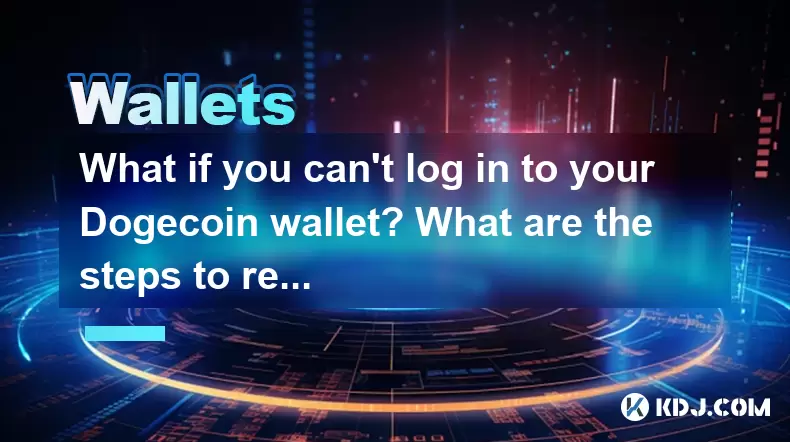
What if You Can't Log In to Your Dogecoin Wallet? What Are the Steps to Retrieve Your Password?
Losing access to your Dogecoin wallet can be a stressful experience, especially if you have significant holdings stored within it. Fortunately, there are several steps you can take to regain access to your wallet. This article will guide you through the process of retrieving your Dogecoin wallet password, ensuring you can once again manage your cryptocurrency holdings.
Understanding Dogecoin Wallet Types
Before delving into the steps for password retrieval, it's important to understand the types of Dogecoin wallets available. Dogecoin wallets can be categorized into software wallets, hardware wallets, and paper wallets. Each type has its own method for password recovery, so identifying your wallet type is the first step in the process.
- Software Wallets: These are digital wallets that can be installed on your computer or mobile device. Examples include Dogecoin Core and MultiDoge.
- Hardware Wallets: These are physical devices that store your Dogecoin offline, offering enhanced security. Examples include Ledger and Trezor.
- Paper Wallets: These are physical documents that contain your public and private keys, which can be used to access your Dogecoin.
Steps to Retrieve Your Dogecoin Wallet Password for Software Wallets
If you are using a software wallet like Dogecoin Core or MultiDoge, follow these steps to retrieve your password:
Locate Your Wallet File: Dogecoin Core stores your wallet data in a file named
wallet.dat. This file is typically located in the Dogecoin data directory. On Windows, you can find it atC:\Users\YourUsername\AppData\Roaming\Dogecoin. On macOS, it's located at~/Library/Application Support/Dogecoin. On Linux, the path is~/.dogecoin.Use a Wallet Recovery Tool: There are third-party tools available, such as Wallet Recovery Services, that can help you recover your password by attempting to decrypt the
wallet.datfile. Be cautious when using these tools, as they may pose security risks. Always ensure you are using reputable software.Backup Phrase Recovery: If you have a backup phrase (also known as a seed phrase), you can use it to restore your wallet on a new installation of the software. Open the wallet software, select the option to restore from a backup phrase, and follow the on-screen instructions.
Steps to Retrieve Your Dogecoin Wallet Password for Hardware Wallets
Hardware wallets like Ledger and Trezor offer a different approach to password recovery:
Recovery Phrase: Hardware wallets rely on a recovery phrase, which is a list of 12 to 24 words provided when you first set up your device. If you have this recovery phrase, you can use it to restore your wallet on a new or reset device. Follow the manufacturer's instructions to enter the recovery phrase and regain access to your wallet.
PIN Reset: If you've forgotten your PIN but still have access to your recovery phrase, you can reset the PIN on your hardware wallet. Connect your device to your computer, enter the recovery phrase when prompted, and set a new PIN.
Steps to Retrieve Your Dogecoin Wallet Password for Paper Wallets
Paper wallets are the most straightforward type of Dogecoin wallet when it comes to password recovery:
Locate Your Private Key: A paper wallet contains your public address and private key. If you have access to the private key, you can import it into a software or hardware wallet to access your Dogecoin. Most wallet software will have an option to import a private key.
Secure Storage: Ensure that your paper wallet is stored securely. If you've lost your paper wallet, there's no way to recover it, as paper wallets do not have passwords or recovery phrases.
Common Mistakes to Avoid During Password Recovery
When attempting to retrieve your Dogecoin wallet password, it's crucial to avoid common mistakes that could lead to further complications:
Sharing Sensitive Information: Never share your private keys, recovery phrases, or passwords with anyone. Doing so can lead to theft of your Dogecoin.
Using Unverified Tools: Be wary of using unverified or untrusted tools for password recovery. These tools may contain malware or be designed to steal your information.
Neglecting Security: Always ensure you are working in a secure environment. Use antivirus software and keep your operating system up to date to minimize the risk of data breaches.
Additional Tips for Dogecoin Wallet Security
To prevent future issues with accessing your Dogecoin wallet, consider the following security tips:
Regular Backups: Regularly back up your wallet data, including your
wallet.datfile for software wallets and your recovery phrase for hardware wallets. Store these backups in secure locations, such as encrypted external drives or safe deposit boxes.Strong Passwords: Use strong, unique passwords for your wallet software. Consider using a password manager to generate and store complex passwords.
Two-Factor Authentication: If your wallet software supports it, enable two-factor authentication to add an extra layer of security to your account.
Educate Yourself: Stay informed about the latest security practices and potential threats in the cryptocurrency space. Knowledge is your best defense against losing access to your Dogecoin.
Frequently Asked Questions
Q: Can I recover my Dogecoin wallet if I've lost my recovery phrase and private key?
A: Unfortunately, if you've lost both your recovery phrase and private key, there is no way to recover your Dogecoin wallet. These are the only methods to access your funds, so it's crucial to store them securely.
Q: Is it safe to use online password recovery services for my Dogecoin wallet?
A: Using online password recovery services can be risky. These services may not be trustworthy, and they could potentially steal your information. Always opt for reputable tools and ensure you understand the risks involved.
Q: How can I prevent forgetting my Dogecoin wallet password in the future?
A: To prevent forgetting your Dogecoin wallet password, consider writing it down and storing it in a secure location, such as a safe or a secure note-taking app with encryption. Additionally, using a password manager can help you keep track of complex passwords without having to memorize them.
Q: What should I do if I suspect my Dogecoin wallet has been compromised?
A: If you suspect your Dogecoin wallet has been compromised, immediately transfer your funds to a new, secure wallet. Change all related passwords and consider using a different device to access your new wallet to ensure no malware is present.
Disclaimer:info@kdj.com
The information provided is not trading advice. kdj.com does not assume any responsibility for any investments made based on the information provided in this article. Cryptocurrencies are highly volatile and it is highly recommended that you invest with caution after thorough research!
If you believe that the content used on this website infringes your copyright, please contact us immediately (info@kdj.com) and we will delete it promptly.
- Kazakhstan's Crypto Leap: Bitcoin ETF and Central Asia's Digital Finance Future
- 2025-08-13 12:45:19
- BlockDAG Presale Blazes Past $371M: Fundraising Frenzy Fuels Crypto Sensation
- 2025-08-13 13:05:21
- Meme Coins: Chasing the 2025 Surge – Which Will Moonshot?
- 2025-08-13 10:25:23
- Bitcoin's Wild Ride: Rally, Pullback, and What's Next
- 2025-08-13 10:25:23
- Bitcoin, Bitmax, and Institutional Demand: A New Era of Crypto Investment
- 2025-08-13 10:45:12
- Solana, ROAM, and Airdrops: What's the Buzz in 2025?
- 2025-08-13 11:35:13
Related knowledge
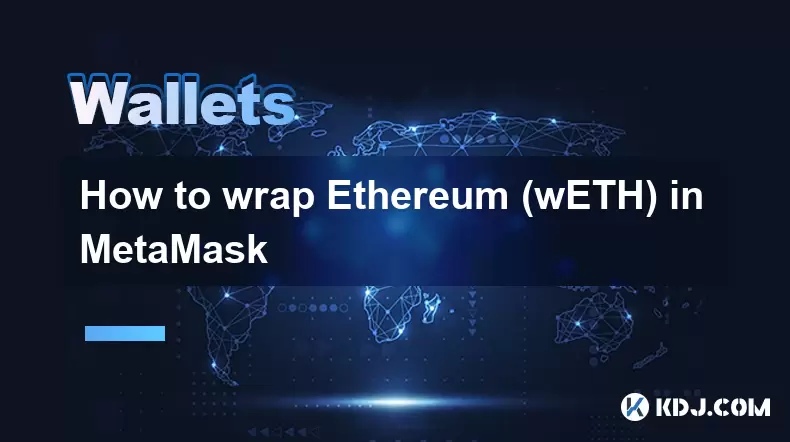
How to wrap Ethereum (wETH) in MetaMask
Aug 13,2025 at 11:36am
Understanding Wrapped Ethereum (wETH)Wrapped Ethereum (wETH) is a tokenized version of native Ethereum (ETH) that conforms to the ERC-20 standard, ena...

How to manage your portfolio in Exodus wallet
Aug 08,2025 at 10:07pm
Understanding the Exodus Wallet InterfaceThe Exodus wallet is a non-custodial cryptocurrency wallet that supports a wide range of digital assets. When...
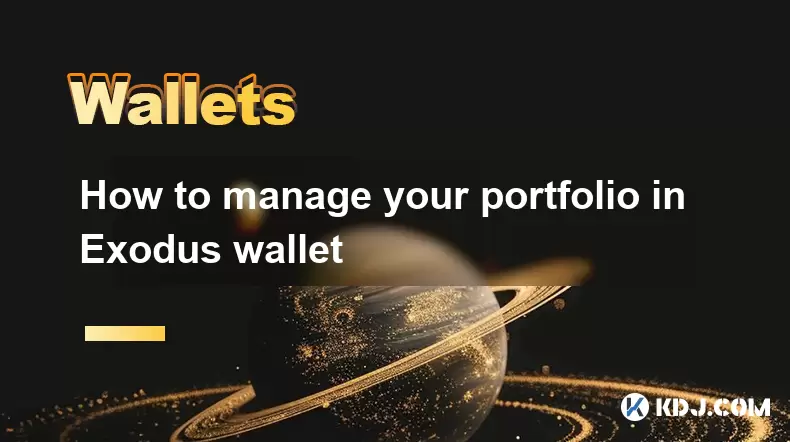
How to manage your portfolio in Exodus wallet
Aug 13,2025 at 11:35am
Understanding the Exodus Wallet InterfaceThe Exodus wallet is a non-custodial cryptocurrency wallet that supports a wide range of digital assets. Upon...

How to reset your MetaMask password
Aug 08,2025 at 01:28pm
Understanding the MetaMask Password Reset ProcessMany users confuse the MetaMask password with the seed phrase or private key, but they serve differen...
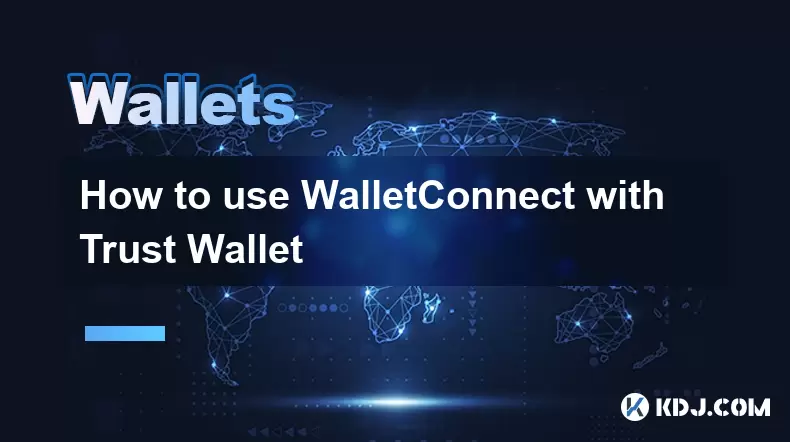
How to use WalletConnect with Trust Wallet
Aug 13,2025 at 01:07am
What Is WalletConnect and Why It Matters for Trust Wallet UsersWalletConnect is an open-source protocol that enables secure communication between dece...
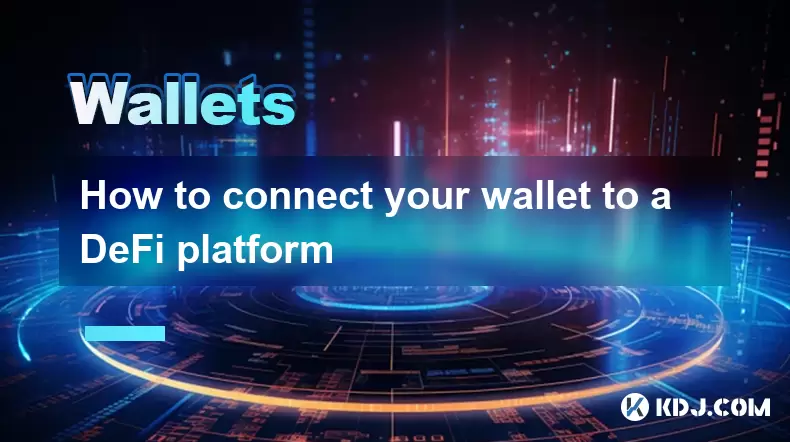
How to connect your wallet to a DeFi platform
Aug 13,2025 at 11:36am
Understanding Wallet Compatibility with DeFi PlatformsBefore connecting your wallet to any DeFi platform, it's essential to ensure your wallet is comp...

How to wrap Ethereum (wETH) in MetaMask
Aug 13,2025 at 11:36am
Understanding Wrapped Ethereum (wETH)Wrapped Ethereum (wETH) is a tokenized version of native Ethereum (ETH) that conforms to the ERC-20 standard, ena...

How to manage your portfolio in Exodus wallet
Aug 08,2025 at 10:07pm
Understanding the Exodus Wallet InterfaceThe Exodus wallet is a non-custodial cryptocurrency wallet that supports a wide range of digital assets. When...

How to manage your portfolio in Exodus wallet
Aug 13,2025 at 11:35am
Understanding the Exodus Wallet InterfaceThe Exodus wallet is a non-custodial cryptocurrency wallet that supports a wide range of digital assets. Upon...

How to reset your MetaMask password
Aug 08,2025 at 01:28pm
Understanding the MetaMask Password Reset ProcessMany users confuse the MetaMask password with the seed phrase or private key, but they serve differen...

How to use WalletConnect with Trust Wallet
Aug 13,2025 at 01:07am
What Is WalletConnect and Why It Matters for Trust Wallet UsersWalletConnect is an open-source protocol that enables secure communication between dece...

How to connect your wallet to a DeFi platform
Aug 13,2025 at 11:36am
Understanding Wallet Compatibility with DeFi PlatformsBefore connecting your wallet to any DeFi platform, it's essential to ensure your wallet is comp...
See all articles























































































